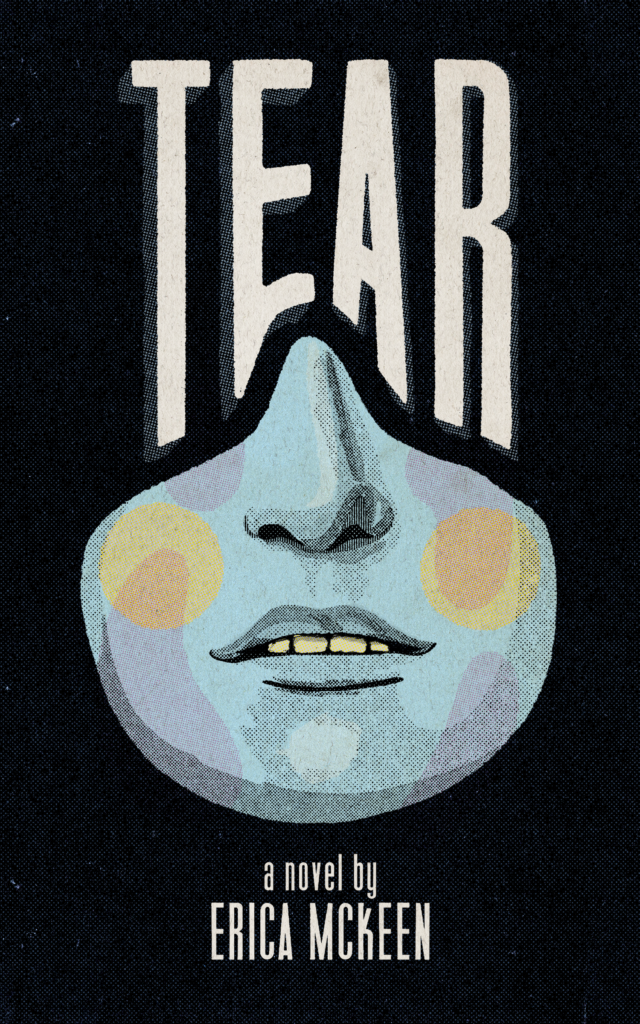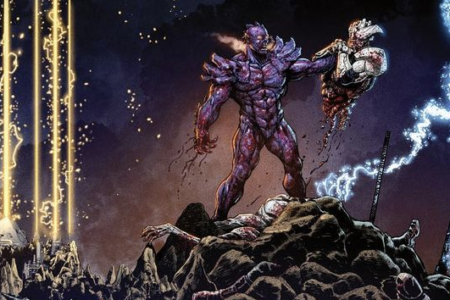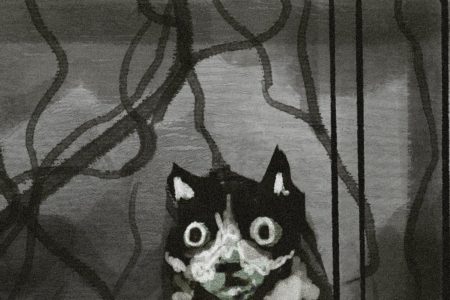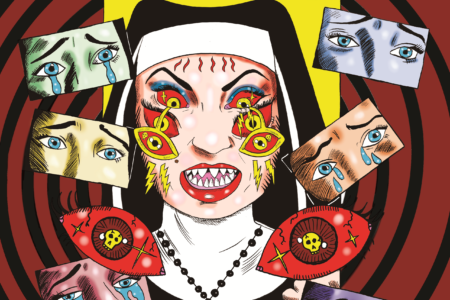
Tear
Erica McKeen, 304 pgs, Invisible Publishing, invisiblepublishing.com, $22.95
Where does trauma make its home? What shape does it take when it is suppressed, left to wander the hallways of our minds, linger in the spaces between? Erica McKeen’s Tear puts these questions at its core, spinning them into a twilight world where materiality and metaphor collide as trauma becomes embodied in its quest to live and be heard.
The novel creates a superimposition of architectural and mental space characteristic of psychoanalysis, where physical spaces become symbolic of psychological states. Frances James, in her final year of university, lives in the basement of an unkempt, unhomely (read: unheimlich) student house. Losing her grip on reality, she descends into a fugue state between memory and dream and becomes convinced she can’t leave the basement — though the door is unlocked and though she is starving. Worse, something very uncanny is down there with her, scratching inside the walls at night.
What results from this setup is a gripping, frightening novel with a deeply gothic sensibility somewhere between Henry James and Shirley Jackson. It’s clear the author is well read, weaving a wealth of subtle allusions to Freud, Derrida and the Brontës into this tale. Though it forms a coherent story, Tear really feels like two books — the first half something like The Haunting of Hill House, steeped in the psychological logic of haunting, and the second half like Mary Shelley’s Frankenstein, featuring a genuinely disturbing monster that is very much flesh and blood. It’s full of cloistered shadow women and the claustrophobia of windowless hallways and basement stairs, but also brims with descriptions of blood, skin, hair and teeth in a palimpsest of some of the most compelling body horror I’ve seen.
Tear is a delightfully creepy, lyrical novel lush with vivid and counterintuitive adjectives. Silence curdles, moonlight flings up thoughts, darkness presses and clings like a physical substrate: “The darkness, the loose and billowing shadows, that blackness, was deep and thick and sweet like jelly in her head, a conductor better than water for her thoughts.” Delicious — and terrifying.
As a millennial, I couldn’t help but read Tear as an allegory of not just intergenerational trauma, but also of generational housing insecurity embodied by the toxic Canadian housing market. McKeen pays close attention to the socioeconomic markers of neighbourhoods, with the age and condition of a house implying something darker and weightier about its residents and their relationship to capitalism than first meets the eye. Trauma lives in the body and mind, but it can also leave these to roam freely among the structures we inhabit, making its home where dispossession festers. When is a house not a home? When it’s an investment property, like the precariously rented student house at 48 Ford Crescent.






